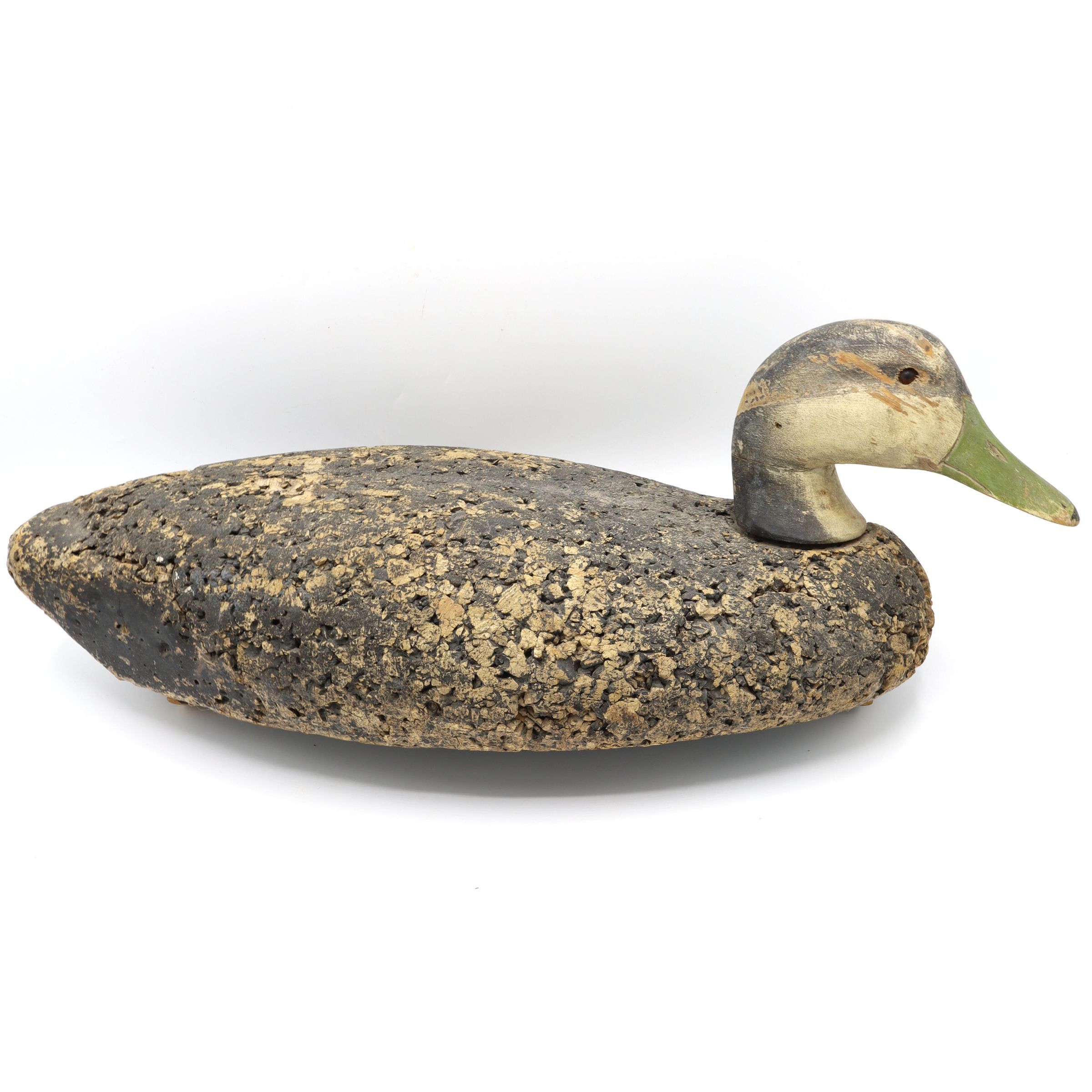Name/Title
Decoy, Black Duck, LL BeanEntry/Object ID
4.44.145Description
This American Black Duck decoy from the 1960s is traced to the LL Bean decoys of the time. LL Bean began selling decoys after the founder went duck hunting with George Soule. Unimpressed with the quality of the decoys Leon Bean was using that day, Soule convinced Bean to use his. As a result, Bean added the cork decoys to his 1941 catalog.
The example here shows apparent wear from use. The paint has worn off over the years, exposing the cork body and some of the balsa wood on the head. The CB stamped on the keel refers to the Casco Bay, Maine, location of Soule's manufacturing plant.Use
Used to attract waterfowl for huntingContext
Duck decoys have a long history in America and can be viewed as a uniquely American art form. Over 2000 years ago, Indigenous people used decoys made of reeds and colored with natural dyes to mimic the waterfowl and lure wary ducks into bow and arrow range. Europeans arriving in America learned the art from the Indigenous people and applied their wood crafting skills to make lifelike wooden decoys.
In the early 1800s, harvesting ducks became an important food source for early immigrants. However, as wetlands were drained for agriculture, duck populations dwindled. Many city dwellers wanting to carry on the tradition of waterfowl hunting traveled long distances to the remaining marshes that rimmed Lake Erie and Sandusky Bay. By 1854, the first hunting club was chartered and protected these areas from continued drainage. The demand for decoys grew, and the manufacturing of wooden decoys started before the turn of the century. Today, most hunters use lightweight plastic decoys.Collection
Magee Marsh Wildlife AreaLocation
Building
Magee Marsh Visitor CenterOhio State Wildlife Area
Magee Marsh Wildlife Area
